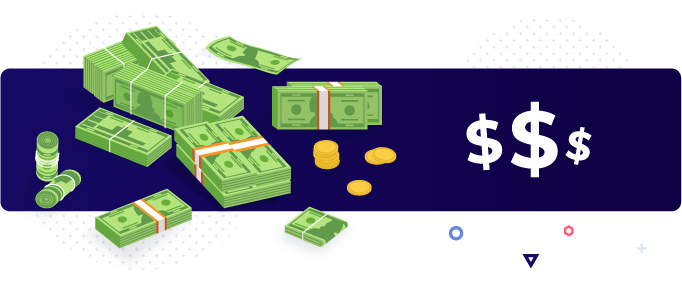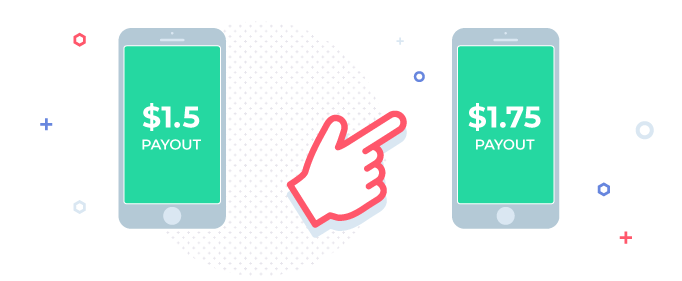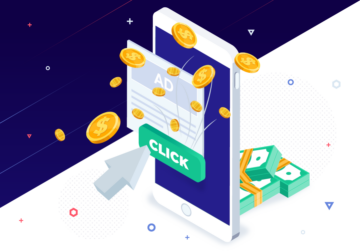Affiliate marketing is a simple interaction. You pay for traffic and the affiliate network pays you for conversions. However, affiliate offers vary in specifications and goals so, naturally, there are many different payment models as well.
If you want to make sure your strategy is on point and you understand how the affiliate marketing machine works, you need to know your way around payout models.
Read the article and learn how to earn commissions from promoting affiliate offers and what actions count as conversions!
How do affiliate marketers make money?
Before you learn how you can get paid as an affiliate marketer, it’s worth remembering how this business works. First of all, you need to sign up for an affiliate program and pick some offers. Then, you’ll get your personalized affiliate links. Once that’s done, you’ll need to come up with a way of making people click on your affiliate links (in the form of ads).
There are many actions you can take to make that happen. In general, there are a lot of types of affiliate marketing. You can do it with or without a website. You can choose a quick investment-type of marketing or a long-term nearly free SEO strategy. However, the most popular methods are paid and include pay-per-click (PPC) or pay-per-view (PPV) type of media buying.
In the case of paid advertising, you take your affiliate links, sign up to an ad exchange platform, and advertise your products in the form of push, pop, domain redirect ads or any other available ad formats. You’ll have to create ads and landing pages in order to make as many commissions as possible. You’ll then have to set bids and purchase traffic, as in, you’ll have to pay per click, or per ad view with the goal of making more money from your affiliate commissions than you spend on the traffic.
In short, affiliate marketing works in the same way as most businesses do – you make an investment and take actions to achieve the highest profit margin possible. Buy traffic for your ad using the pay per click/view method and receive payments for leads, sales, or site visitors on a cost per click (CPC) basis.
The only exception to this might be pay per call model as it refers to what a customer pays for while engaging with your ad.
Still not sure how affiliate marketing works yet?
Learn how to get started here!

Why are there different affiliate payment methods?
When you pick an affiliate offer to promote, you will most likely notice there are different payment models depending on the offer. Additionally, affiliate networks quite often have a different name for it. You can find such names as price model, price format, payout model, conversion type, and so on.
Payment models tell you what your goal is and what you will get paid for. If you want to run a successful affiliate marketing business, you need to know what the ultimate goal of your ad and funnel is. An affiliate marketing payment model sets that goal.
Sometimes the offer is just about collecting a mailing list. In such a case your payment model will be PPL, as leads are the primary goal (“a conversion”). Analogically, if you’re promoting an app the conversion is installation, and if you’re promoting a physical product what counts as a conversion will most likely be a purchase.

Affiliate marketing payment models
Without further ado, let’s discuss what kind of conversions can get you a commission.
Cost per Action (CPA)
CPA marketing is the most basic payout model as it earns you a commission for a specific action. The majority of affiliate programs use it as it’s broad enough to be ideal for many different offers. The action is always specified by the affiliate network so once you get the affiliate link, you’ll know exactly how to promote it.
Since there’s so much to choose from, you might use a guide to finding the most profitable CPA offers.
Cost per Sale (CPS)
Cost per sale is a model in which you earn a commission for every sale you make. This payout model is characteristic of e-commerce offers where the only goal of the funnel is to convince a user to purchase the product you advertise.
Cost per Install (CPI)
Cost per install is a payment model in which you earn a commission for each time a user installs an app on their mobile (or desktop) device. The goal of your landing page is to promote the app in such a way that they end up downloading and installing it.
This payment model is especially popular for advertising mobile applications and games but can also be used for other software.
Cost per Lead (CPL)
CPL payment model earns you an affiliate commission every time a user signs up. This is also a very popular payment system as it’s used for the majority of lead generation, vouchers, and sweepstakes types of offers. All the user has to do is leave their contact details such as an email address, and you’ll score your conversion.
Cost per lead is an affiliate model especially recommended for beginners because of how simple it is. Generating leads is much easier than selling products, hence CPL offers to convert more easily and brings better results for low-budget marketers.
Revenue Share (RevShare)
Revenue share is a business model often used by affiliate programs or merchants who intend to promote more serious offers, often related to gambling and casino verticals. In such an affiliate payment system, you receive a fixed percentage of the profits the company (e.g. casino site) makes on the customers you’ve brought.
Any type of subscription content website is a great example of a rev share offer. While in other cases the customer makes one action/purchase, with subscription plans you expect many sales, and thanks to the rev share business model, you’ll be able to enjoy the profits for a long time.
Cost per Click (CPC)
CPC might be the rarest of affiliate marketing payment models as it’s only implemented by the biggest merchants in order to increase brand recognition. Such an affiliate program will earn you a commission for every click on the affiliate link.
The purpose of the link is not to make a sale but to increase brand awareness so any site visitor is considered a win. It’s not even necessary for the customer to leave their email address or perform any actions. A website visit is enough.
Cost per Mille (CPM)
CPM is, in simplest terms, cost per thousand impressions. It’s essentially a CPV model except that it’s counted in thousands. This is yet another strategy used to generate brand awareness. The goal here is to show the ad to as big of an audience as possible so banners, pops, push, and native ads (especially on mobile) are the popular methods.

Which affiliate marketing payment model is the best?
There are no best affiliate marketing payment methods. In fact, each of these cost models has its own purpose. If the merchant needs leads, they’ll pay per lead (CPL) and that’s the only fair business model. If the merchant wants to make sales, they’ll pay per sale (CPS).
CPA is the most commonly used price format so it’s quite likely most of the products you’ll ever advertise will use it. CPC, although it sounds wonderfully easy, is hard to come by. Such ad campaigns are almost solely done by huge merchants with already well-established brands. Additionally, they’re done by professional marketing agencies rather than affiliates and affiliate programs.
Most often, there is no possibility to change or negotiate what you get paid for. However, if the sales made by the customer you’ve brought have the potential to be recurring it might make sense to ask your network or affiliate program account manager for a rev share model. That way you’ll either get paid a flat rate commission for each sale or varied commissions depending on the values of each sale.
If the merchant needs leads, they’ll pay per lead (CPL) and that’s the only fair business model. If the merchant wants to make sales, they’ll pay per sale (CPS). This process can be made easier and more manageable with the use of quoting software.
Why do some offers pay more than others?
Last but not least, payouts will depend mostly on the conversion flow or the degree of complexity of each offer. It’s easier to bring a lead than to make a sale. It’s also easier to make a sale than to convert a site visitor into a regular customer.
Payouts might also increase or decrease based on how easy the offer is to advertise. If the merchant is satisfied with the number of leads or product sales brought by the affiliates they might lower the CPS rate. On the other hand, if the number of leads is insufficient and there aren’t too many customers, merchants might bump the payouts to attract more affiliates to the program.
Affiliate marketing payment models are generally fluid and depend on many factors. In short, merchants have goals to achieve. Be it website visits, landing page visits, product sales, loyalty program sign-ups, leads, or subscription payments – the higher the payments the more difficult these goals are to achieve.

Conclusions
There are many payment models just as there are plenty of marketing metrics, products to advertise, and types of advertising to pair them with. From the most popular CPA type to the least popular CPC – each affiliate program is different and has a different form.
The key takeaway here is – understand the payout types but always pick offers based on your experience and level of skill.
Ready to get started?
Sign up to Zeropark
Bring the best traffic to your offers!
Magdalena Bober





